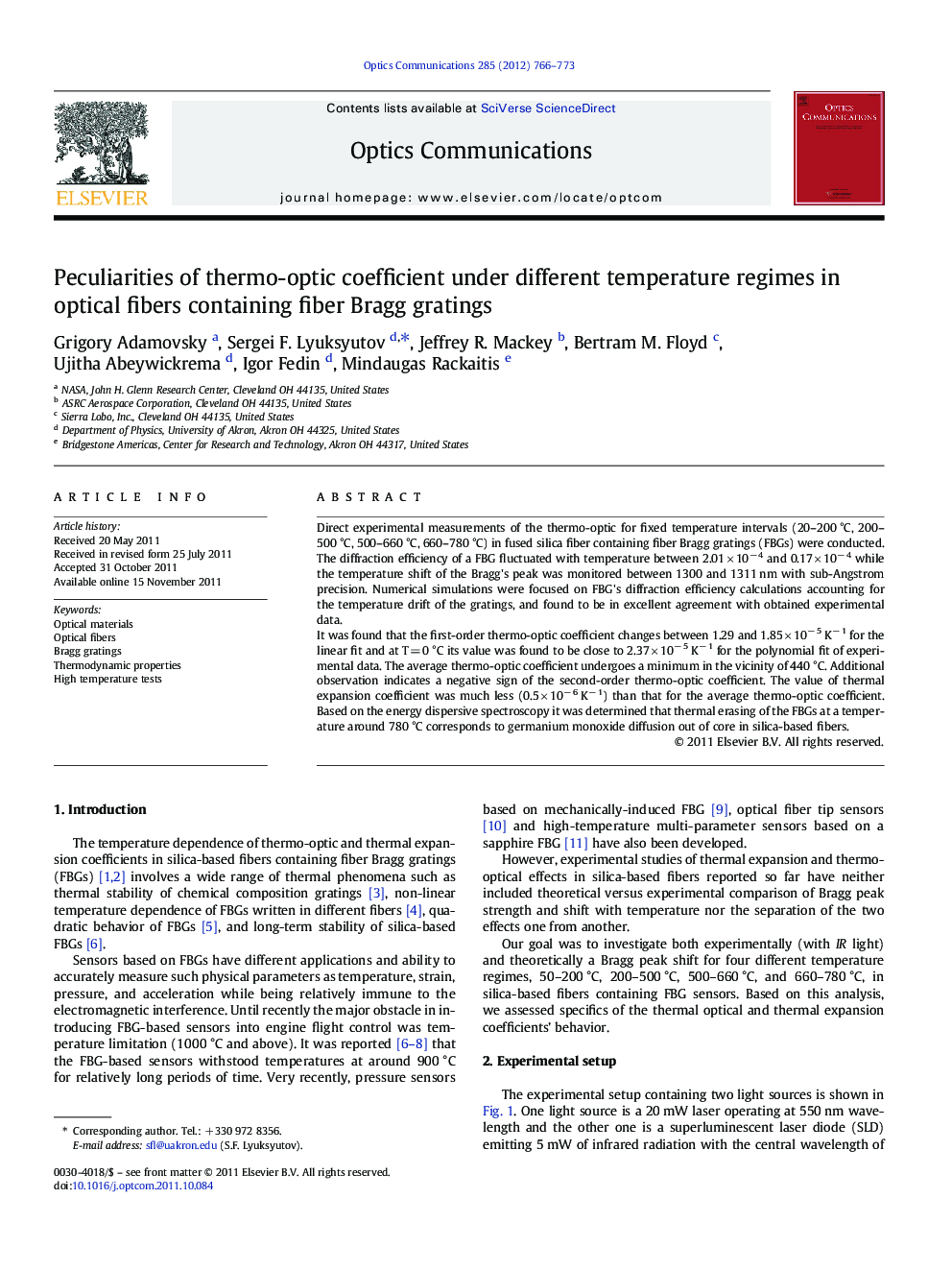| Article ID | Journal | Published Year | Pages | File Type |
|---|---|---|---|---|
| 1536753 | Optics Communications | 2017 | 8 Pages |
Abstract
It was found that the first-order thermo-optic coefficient changes between 1.29 and 1.85 Ã 10â 5 Kâ 1 for the linear fit and at T = 0 °C its value was found to be close to 2.37 Ã 10â 5 Kâ 1 for the polynomial fit of experimental data. The average thermo-optic coefficient undergoes a minimum in the vicinity of 440 °C. Additional observation indicates a negative sign of the second-order thermo-optic coefficient. The value of thermal expansion coefficient was much less (0.5 Ã 10â 6 Kâ 1) than that for the average thermo-optic coefficient. Based on the energy dispersive spectroscopy it was determined that thermal erasing of the FBGs at a temperature around 780 °C corresponds to germanium monoxide diffusion out of core in silica-based fibers.
Related Topics
Physical Sciences and Engineering
Materials Science
Electronic, Optical and Magnetic Materials
Authors
Grigory Adamovsky, Sergei F. Lyuksyutov, Jeffrey R. Mackey, Bertram M. Floyd, Ujitha Abeywickrema, Igor Fedin, Mindaugas Rackaitis,
